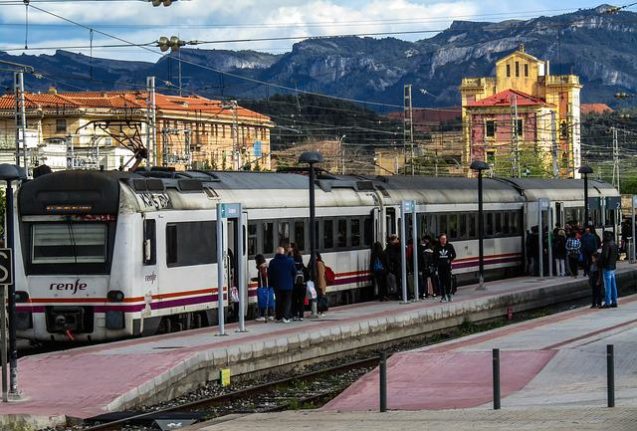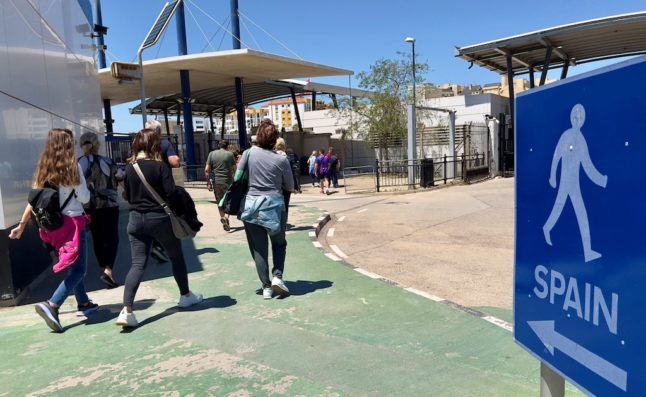Spain’s Prime Minister Pedro Sánchez announced recently that multi-journey tickets for some trains operated by the state owned train network, RENFE, will be free.
Announced on July 12th during the first day of the ‘State of the Nation’ debate, the headline grabbing 100 percent discount followed news that the government had originally committed to a 50 percent reduction.
A 30 percent discount will also be applied to the cost of passes and multi-trip tickets for regional and local transport services, including city metro, bus and tram systems, bought between September 1st and December 31st 2022.
READ MORE: How much can you save on public transport in Spain with the new state discount?
The scheme will cost public coffers a reported €200 million, according to government spokesperson Isabel Rodríguez, and comes amid a series of measures put in place by the government to try and ease the pain of rising inflation and prices, but also to lower pressures on fuel following the Russian invasion of Ukraine and ensuing energy crisis.
“The government will subsidise 100 percent of the public service of commuter trains operated by Renfe. We hope that the autonomous communities can complement this enormous effort made by the Spanish government,” Sánchez said.
But which trains will be free, when, and how can you take advantage of them?
When?
This eye-catching travel discount will be available from September 1st to December 31st 2022, during which multi-journey train tickets on the trains outlined below will be free.
Which trains are free?
Unfortunately, the Spanish government has not given everyone in Spain free train travel on every route and on every type of train.
There are rules.
Simply put, local and commuter trains will be free. Cercanías, Rodalies (Catalonia), and Media Distance (local and medium-distance journeys) will be 100 percent free of charge.
The policy is aimed at encouraging the use of trains as opposed to other fossil fuel intensive forms of transport, and it’s valid for journeys up to 300km.
That in mind, trips on long-distance or high-speed trains, such as AVE and Alvia, are not included in the plan.
Neither will the routes in Avlo, the low-cost AVE option established in 2021, nor the medium and high-speed Avants.
Avlo and Avants will instead have a 50 percent discount on the original price, as outlined by the government in June.
How can I take advantage of this offer?
For the 100 percent discount on Cercanías, Rodalies de Cataluña and Media Distancia, monthly and multi-journey tickets will be eligible for the discount.
The multi-trip ticket for Cercanías or Rodalíes will be valid for unlimited trips between any origin and destination, and free for travellers who make 16 or more trips (four per month) between September and January, offered to travellers who purchase monthly passes.
You can find a breakdown by RENFE on the regional differences and passes here.
For Media Distance services, the pass will be free for those users who make 16 or more journeys, or travellers that purchase any of the following monthly passes:
- Bono 10 Regional
- Tarjeta 10 Sencilla
- Tarjeta 10 Libre
- Abono Mensual Regional
- Tarjeta Mensual 40 Sencilla
- Tarjeta Mensual 40 Libre
For more information in English about each of these Media Distancia (medium distance) passes, click on the one you’re interested in learning about.

Types of journey
Importantly, it is worth noting that one-way and round-trip tickets are also excluded from this initiative, and will therefore not be free.
The free travel is designed for frequent travellers, and includes weekly and monthly subscription passes, the full cost of which will be covered.
Deposits
As with anything in life, always read the small print – as it’s rare that something is totally free. Fortunately, The Local has done that for you, and it turns out that you won’t simply be able to waltz up to your local train station and take a free train anywhere from September 2022.
In order to take advantage of the 100 percent discounts, you must first put down a small deposit.
- For Cercanías and Rodalíes services, this will be €10.
- For medium distance services, it will be €20.
- The idea of the deposit is that they ensure travellers make a minimum of four trips per month and it’s a way of avoiding scams.
- The deposits will be returned to travellers after four months, when the scheme ends at the end of December.
Which routes?
Because Cercanías or Rodalíes cover shorter, local routes, the passes will be valid for unlimited trips (with a minimum of 16 over the four months) between any origin and destination.
As for medium-distance, high-speed trains (on routes that do not exceed 100 minutes, 1 hour and 40 minutes), the government has said it will pay the price of 50 percent of monthly passes.
The lines benefiting from this are Madrid-Palencia, Madrid-Zamora, León-Valladolid, Burgos-Madrid, León-Palencia, Burgos-Valladolid, Ourense-Zamora, Palencia-Valladolid, Huesca-Zaragoza, León-Segovia, Segovia-Zamora, and Palencia-Segovia.
How do I get the discount?
As of now, the government have announced the discounts but not exactly how to get them.
It seems fairly certain that a deposit will be required to take advantage of the offer, but it is unclear how exactly the government will apply the discounts, and whether they will be applied to the monthly travel passes or if there will be some kind application process – whether online or at the station – in order to get the discount.
Like many things in Spain, it is expected the way in which the discount is applied and how to apply for it will be left up to the regional governments.
Stay tuned to The Local Spain to keep up to date with this offer, and to receive information on taking advantage of it as soon as the government releases more information.
Spanish trains explained
Here’s a quick breakdown of the different types of train services in Spain.
Cercanías: Local trains that link major cities with their metropolitan area. Cercanías operates in Alicante, Barcelona, Bilbao, Cádiz, Madrid, Málaga, Oviedo Santander, San Sebastián, Sevilla, Valencia and Zaragoza.
Rodalies: The same as Cercanías, but in Catalonia.
Media distancia: Regional trains that link different cities, towns, and villages within a single autonomous community.
Regional: Similar to media distancia but usually with more stops, and are often, as a result, slower but also cheaper.
Ave: Spain’s high-velocity, cross country service.



 Please whitelist us to continue reading.
Please whitelist us to continue reading.
No mention of FEVE network. Is it excluded?